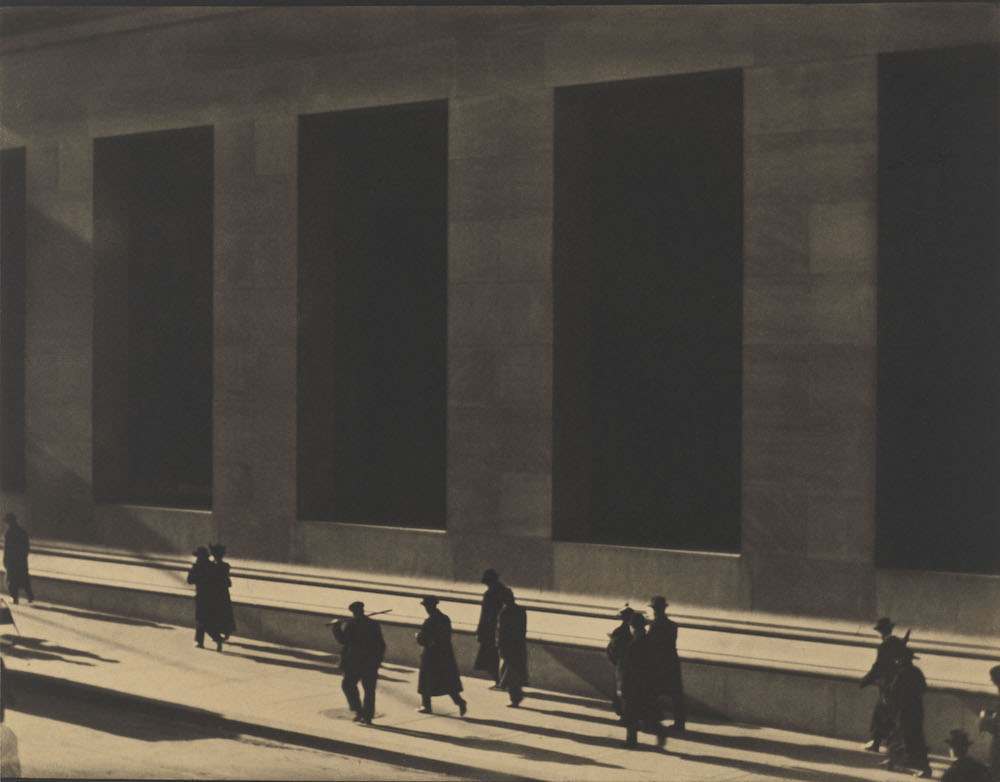These are the pictures we wait for. Paul Strand (October 16, 1890 – March 31, 1976) makes time travel possible. We go back to New York to see a blind woman stood on the streets in 1916; a mother and sons pose for his camera in the village of Luzzara on the Po River in Italy, 1953 – the communist father had been killed by political opponents; piermaster MacEachen is looking at us by his hut at Lochboisdale, South Uist, Hebrides in 1954.
Strand’s picture of Wall Street workers passing the looming facade of the then new Morgan Trust building blends people and landscape, creating a parabolising abstraction on modern life.
Strand took many of his photographs using a decoy lens on his camera, duping the subject into thinking he was photographing something else. The subject relaxes, observing the observer. But what do we see when we look at the Blind woman unable to return our gaze? The focus might just be on us. What do we look at?; what do we chose to look at?; what do we think worthy of recording and looking at again?
When Strand’s work was first published in the final edition of the journal Camera Work, editor Alfred Stieglitz – they were introduced by the great documentary photographer Lewis Hine, who taught Strand at the Ethical Culture School – commended Strand’s work as “devoid of all flim-flam; devoid of trickery and of any ‘ism,’ devoid of any attempt to mystify.”
Catch more of Paul Strand’s work at the V&A.
Would you like to support Flashbak?
Please consider making a donation to our site. We don't want to rely on ads to bring you the best of visual culture. You can also support us by signing up to our Mailing List. And you can also follow us on Facebook, Instagram and Twitter. For great art and culture delivered to your door, visit our shop.


















